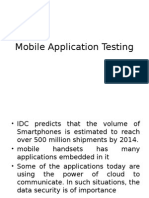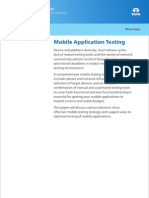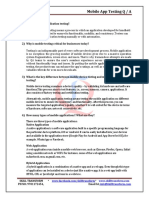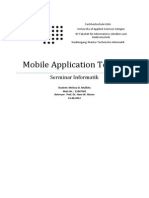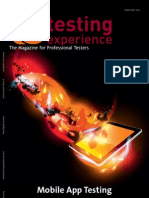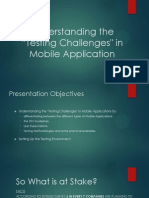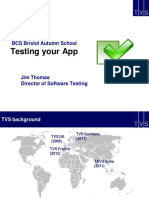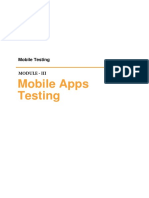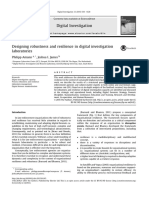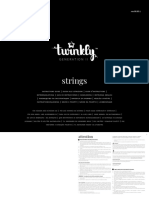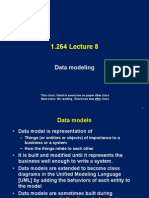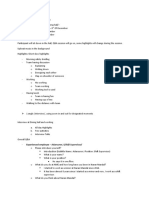0% found this document useful (0 votes)
21 views36 pagesLecture 9 Testing Mobile Applications
The document discusses the importance of testing mobile applications, emphasizing the need for a comprehensive testing strategy that includes usability, performance, and security testing. It highlights the unique challenges of mobile app testing due to rapid technology adoption and user expectations for high-quality experiences. Additionally, it outlines various testing methods and guidelines to ensure that mobile apps meet functional and non-functional requirements before release.
Uploaded by
ummahhh20Copyright
© © All Rights Reserved
We take content rights seriously. If you suspect this is your content, claim it here.
Available Formats
Download as PDF, TXT or read online on Scribd
0% found this document useful (0 votes)
21 views36 pagesLecture 9 Testing Mobile Applications
The document discusses the importance of testing mobile applications, emphasizing the need for a comprehensive testing strategy that includes usability, performance, and security testing. It highlights the unique challenges of mobile app testing due to rapid technology adoption and user expectations for high-quality experiences. Additionally, it outlines various testing methods and guidelines to ensure that mobile apps meet functional and non-functional requirements before release.
Uploaded by
ummahhh20Copyright
© © All Rights Reserved
We take content rights seriously. If you suspect this is your content, claim it here.
Available Formats
Download as PDF, TXT or read online on Scribd
/ 36
